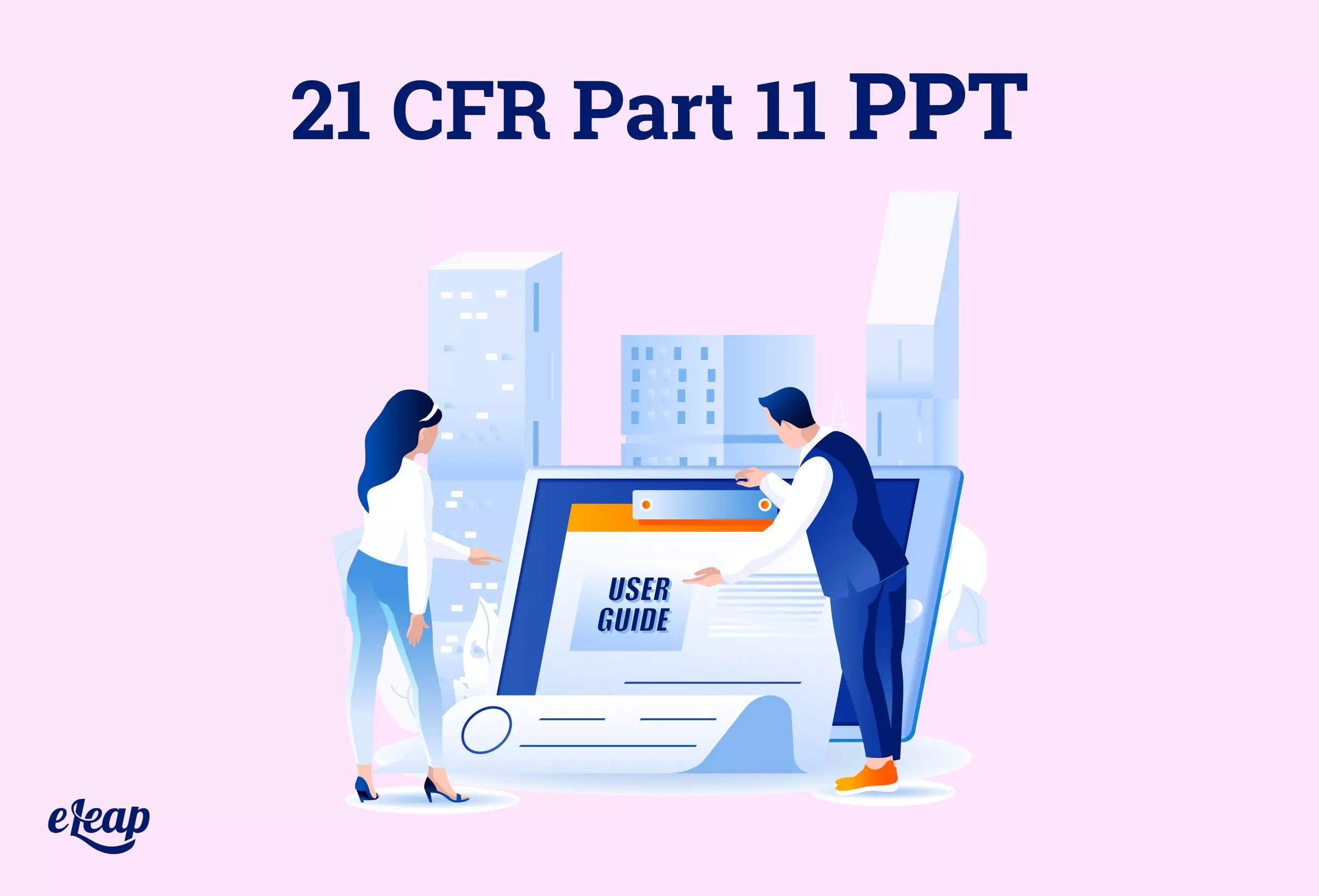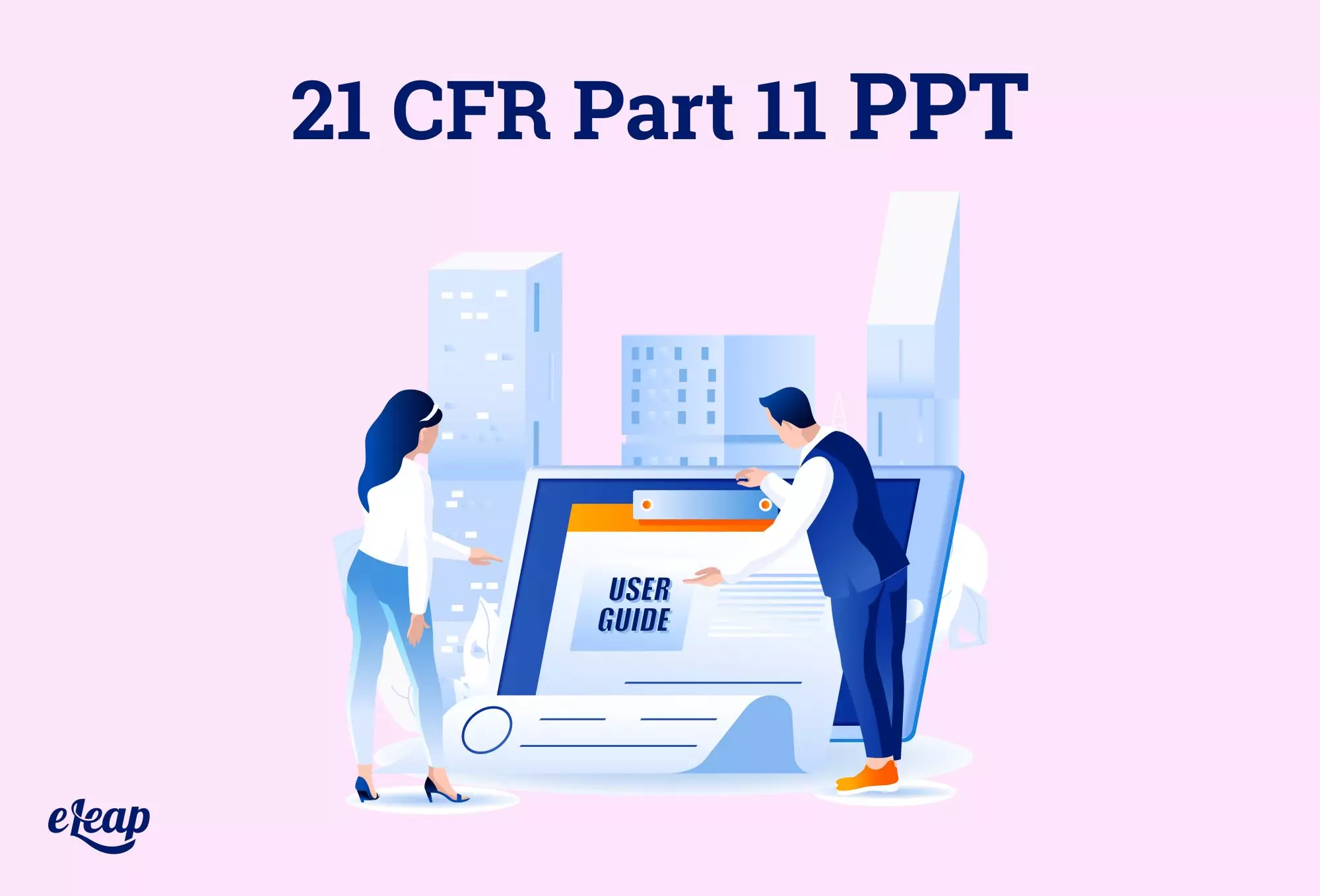21 CFR Part 11 PPT
If Your Life Science Company Uses an LMS, This Guide Is for You

21 CFR Part 11 discusses compliance requirements for companies and organizations within the life sciences industry. This includes pharmaceutical companies, biotech firms, medical device manufacturers, medical manufacturing companies, and numerous others. Specifically, Part 11 deals with electronic records and electronic signatures used within any electronic system in those businesses. You can download the whitepaper, “How to Prepare for a 21 CFR Part 11 FDA Inspection“.

Because of that, it touches on your learning management system, as well as all of your other electronic systems (payroll, labeling, etc.). What does it mean for you, though? We’ll walk you through some of the most critical considerations to make, so whether you’re compiling a 21 CFR Part 11 PPT to share with your C-suite or simply need some guidance on migrating to a new LMS, you’ll have the information necessary.
What Is an Electronic System?
We’ll start with the basics. What’s an electronic system? The FDA doesn’t specify any particular type, but it applies to any type of computerized system where records are stored and accessed. Both closed and open systems are covered, and 21 CFR Part 11 applies equally to in-house networks and cloud-based solutions.
What Does 21 CFR Part 11 Require?
We’ll delve into the actual requirements shortly, but to provide a 10,000-foot view, the goals of these requirements are as follows:
- Access to data must be restricted
- Sensitive data must be protected from prying eyes, hackers, and malicious software
- The ability to alter information in any way must be controlled and restricted
- Full accountability, traceability, and transparency should be the rule
For most companies, your LMS should already provide at least some of that functionality. For instance, if your learners have to log into the system using a unique username and password, that constitutes two of the three components of an electronic signature. If your LMS saves and stores information about the courses, modules, and lessons your learners have taken and completed, those are “electronic records” and they’re vital to protect and store safely.
Why Does the FDA Care about Training Records?
One thing that might not be immediately apparent from browsing through a 21 CFR Part 11 PPT or checklist is why the FDA cares about your learning management and training records. It’s easy to understand why access to customer information should be protected. It’s also pretty clear why product labels should be linked to an electronic signature to ensure authenticity and trust. However, what’s the deal with your LMS?
First and foremost, training records are critical. They’re one of the first things an audit team will look at during an FDA inspection. Why? Because in the life science industry, the FDA requires that your employees be able to handle their responsibilities correctly and to understand their duties through in-depth training and development.
21 CFR Part 11 is all about ensuring reliable electronic records that can be trusted not to have been altered by anyone without authorization, and trustworthy electronic signatures that are carefully controlled and monitored. This applies to your learning management system as much as it does to any other electronic system in use within your organization.
The Four Key Features to Consider with an LMS
While a 21 CFR Part 11 PPT might make it seem like there are pages and pages of information that apply to your Learning Management System, the truth is that there are only four critical features that your system must-have. These are:
- Electronic signatures
- Versioning
- Auditing
- Reporting
Electronic Signatures
As mentioned already, electronic signatures are nothing more than usernames and passwords, combined with at least one other factor. Usually, at least when it comes to document alterations, this is a noted reason for the access and update. So, you need to ensure that your learning management system requires unique usernames and passwords, but also combines those with other factors including change reasons, time and date stamps, and more. The stronger the electronic signature, the more trustworthy it will be, and the greater the protection it will offer.
However, you cannot rely on the LMS alone for compliance with electronic signature rules. You also need policies and procedures in place that deal with things like ensuring the uniqueness of signatures across the organization, how to deal with lost/forgotten signature components, what to do when an employee leaves the company, and more.
Versioning
You must have control and the ability to document different versions when it comes to learning and development. For instance, if an employee completed a required module in the past, but a new version includes additional information that must be mastered, the LMS could alert you to the differences between the versions so that the employee could retake the module and ensure compliance. The versioning information could also be stored in the training record, providing insight at a glance as to which version the employee had completed in the event of questions.
Auditing
The ability to audit learning and development records is critical under 21 CFR Part 11. You should have access to any changes made to sensitive information, who made those changes, when they were made, and why.
Reporting
Like auditing, reporting is a vital consideration when choosing an LMS. You should have access to all of the information discussed above in easy-to-digest reports both within the LMS dashboard, and printable as hard copies. You should have access to exam/survey reports, compliance reports, certification reports, system reports, and more.
Why eLeaP Should Be Your Choice
Gaining important insights about the FDA’s requirements can be difficult, even with a detailed 21 CFR Part 11 PPT. At eLeaP, we designed our LMS from the beginning to ensure it is fit for your needs, making the validation process simpler and easier. From reporting and auditing to versioning and electronic signatures, our platform delivers both compliance and ease of learning. Contact us to schedule a custom consultation.